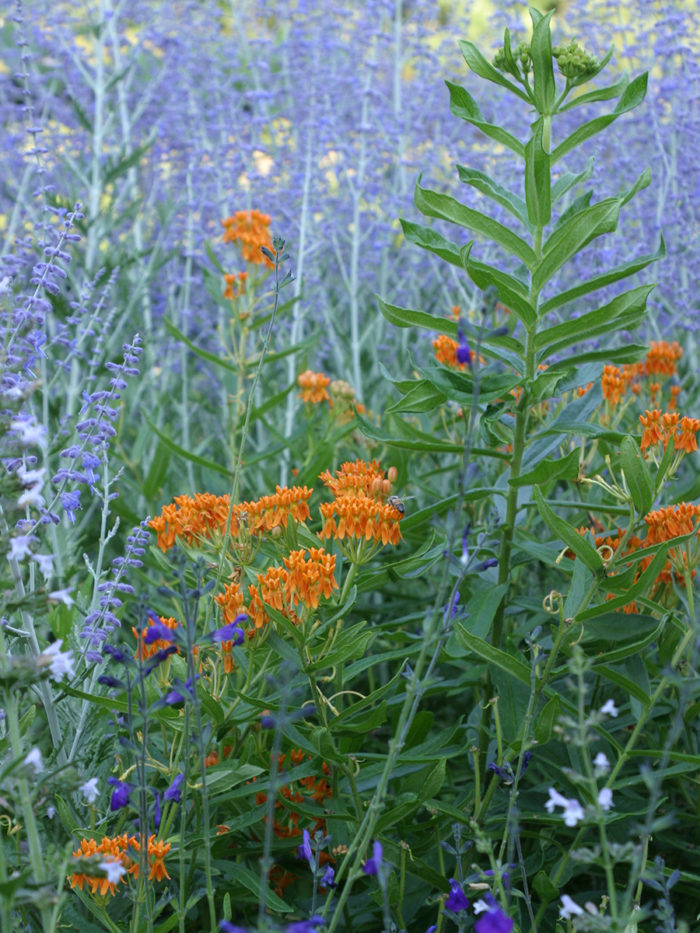
Midsummer can be brutally hot and dry in the Mid-Atlantic region. Frequent heat waves and dry spells result in the biggest chore of the summer—watering. However, a few changes can help you save time watering and keep the water you do get in the garden. They will also help you conserve water, and if you are on a public water system, they will also save you money.

Site correctly
The best way to help save water is to simply put the right plant in the right place. By providing plants with the conditions that allow them to thrive, watering will be kept to a minimum. Native plants are a wonderful choice when thinking about conserving water. Native plants have adapted to the soil and climate conditions in which they grow. For this reason, these plants utilize water more efficiently than many nonnative plants. Great native choices are switchgrass (Panicum virgatum cvs., Zones 4–9), bee balm (Monarda spp. and cvs., Zones 4–9), and Joe Pye weed (Eutrochium purpureum, Zones 4–9). For the shade, heuchera (Heuchera spp. and cvs., Zones 3–8) and foam flower (Tiarella spp. and cvs., Zones 3–9) are great picks that are available in a myriad of colors and textures.
Not every gardener wants to limit their plant choices to natives, so when choosing any plant look for drought tolerance and those that do well in hot, dry climates. Great choices are yarrow (Achillea spp. and cvs., Zones 3–9), catmint (Nepeta spp. and cvs., Zones 4–8), moor grass (Molinia caerulea and cvs., Zones 5–9), and ‘Karl Foerster’ feather reed grass (Calamagrostis × acutiflora ‘Karl Foerster’, Zones 5–9). Epimedium (Epimedium spp. and cvs., Zones 4–9) and hellebore (Helleborus orientalis, Zones 4–8) do well in dry shade.
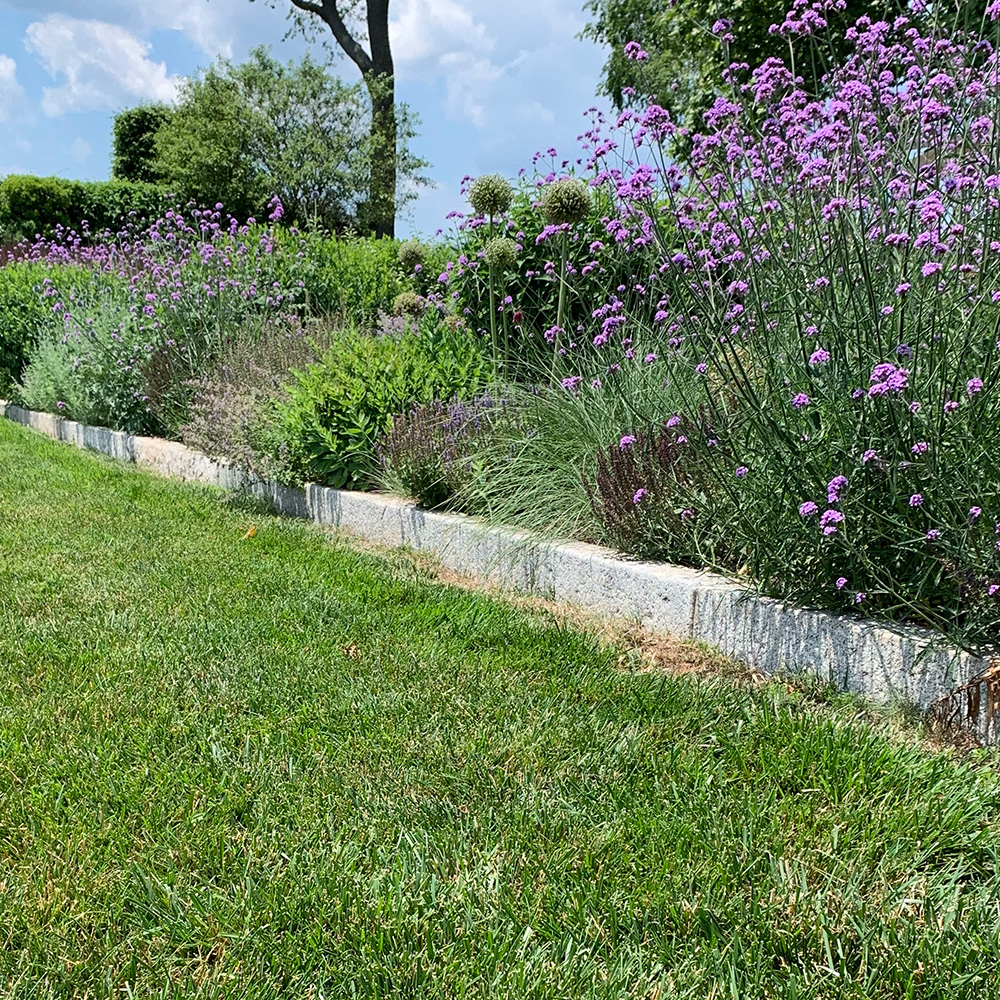
Plant tightly
Placing groups of plants close together will help conserve water by creating shade for the soil below. This will cool the roots as well as reduce evaporation. A benefit of planting this way is weed suppression. Grasses and grasslike plants such as liriope (Liriope spp. and cvs., Zones 5–11) are great for planting en masse. These plants do not need as much air circulation and are not as prone to pests as some broadleaf plants. If you are looking for more color, coneflowers (Echinacea spp. and cvs., Zones 3–9) look stunning planted in a group.
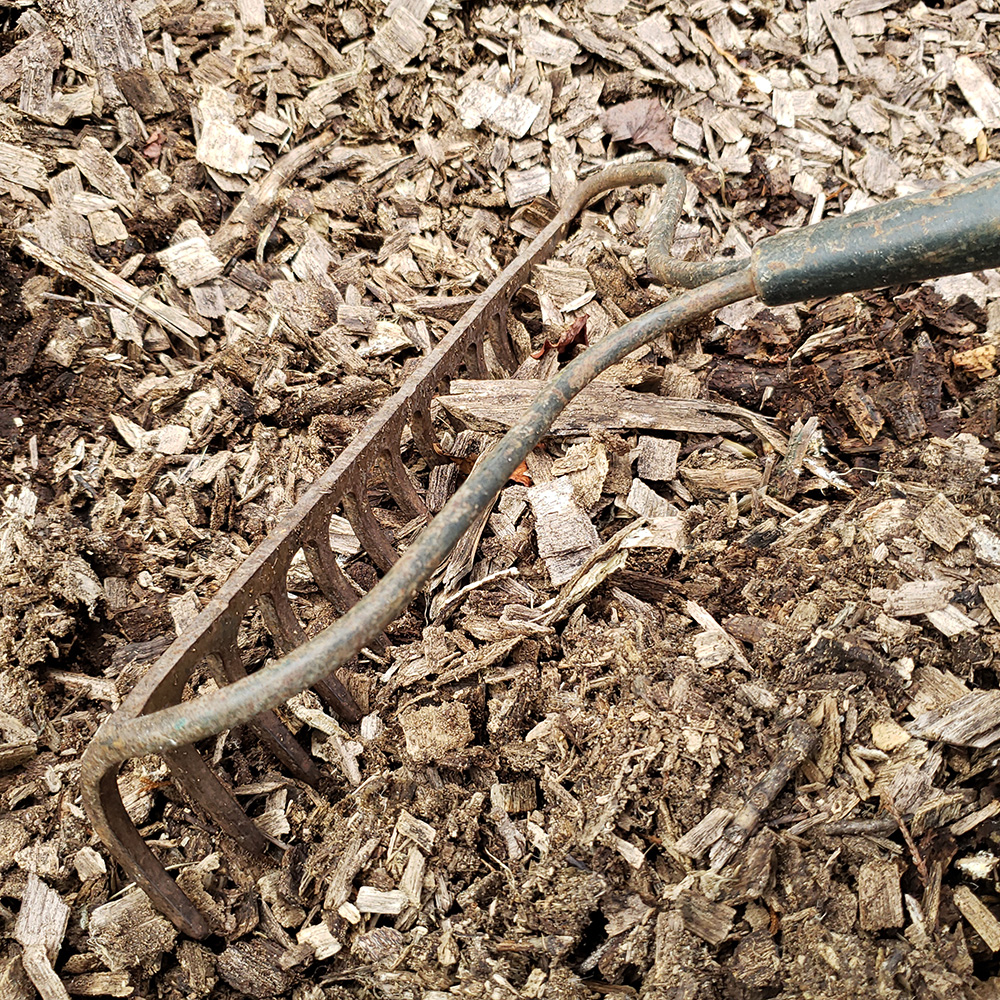
Mulch
If planting a bed tightly is not an option, be sure to mulch any open spaces in the garden. Adding a layer of mulch significantly retains moisture for your plants. You do not need to spend money on mulch every year. A great way to create your own mulch is to chop up your perennials in late winter or early spring before the new foliage emerges. Also, allow leaves to stay in place in fall, or chop them up with the lawnmower and blow them into the beds.
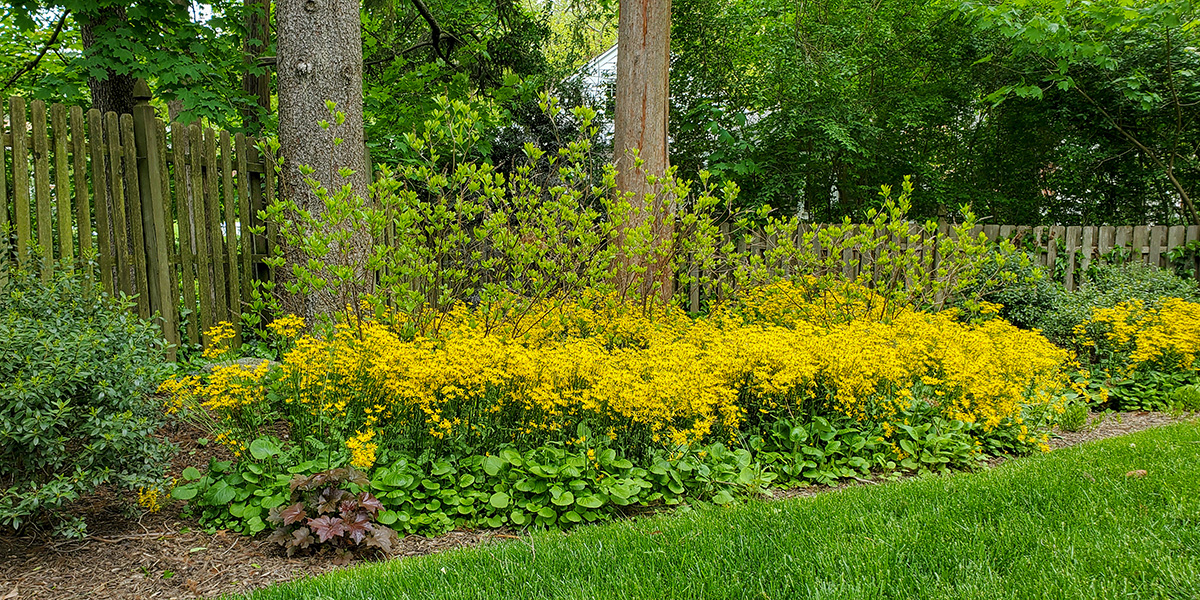
Add a rain garden
By creating a rain garden, you can keep any runoff that comes from roofs, driveways, or the lawn in your garden. If you have a low spot or slope that drains slowly, a rain garden may be a great option. A rain garden typically has three zones: wet, mesic (moist), and transition (that is, transition to the regular garden conditions). When designing a native rain garden, Lee Armille, of Philadelphia-based Athyrium Design, recommends summersweet (Clethra alnifolia, Zones 3–9) and Virginia sweetspire (Itea virginica, Zones 5–9) for structure and height. Both tolerate very wet to moderately dry soil conditions. Virginia sweetspire can tolerate a bit more shade than summersweet.
Lee’s other go-to perennials for rain gardens are blue flag iris (Iris versicolor, Zones 3–9) and golden ragwort (Packera aurea, Zones 3–8). Extremely easy to grow and a bit aggressive, they fill in the garden nicely. Not to worry—some seasonal editing will control both plants. Lee also suggests using one of her favorite plants, butterfly weed (Asclepsias tuberosa, Zones 3–9), because “not only is it well behaved, [but] it serves as a food source for the caterpillar stage of the monarch butterfly.”

Rethink your hardscaping
When adding or replacing a patio or driveway, permeable pavers are a great option to conserve water and reduce water runoff flowing into neighborhood storm drains. This, in turn, prevents pollution from entering the local watershed. Permeable pavers are designed to allow water to flow down between the joints of the stones into a sublayer where water is collected and percolates into the soil below. Lee advises that a well-constructed sublayer is necessary for permeable pavers. She explains, “At least 4 inches of clean stone should be installed onto a lightly compacted soil layer and compacted. Then smaller stone—not sand—is installed over that. The base is not the place to skimp!”
She also adds that it is key to keep the paved area clean of debris frequently. She says, “As leaves and dirt accumulate on the paver surface, they fill in pore space meant to infiltrate water, making it less efficient. The more the surface is kept clean, the better it can perform over time.”
While July can be hard on a gardener, it does not have to be hard on the plants or the environment. With a few edits to the garden, a significant amount of time and water can be saved. As water is one of our most precious resources, gardeners can collectively be impactful stewards of water conservation.
—Michele Christiano is a horticulture assistant at Longwood Gardens in Kennett Square, Pennsylvania.




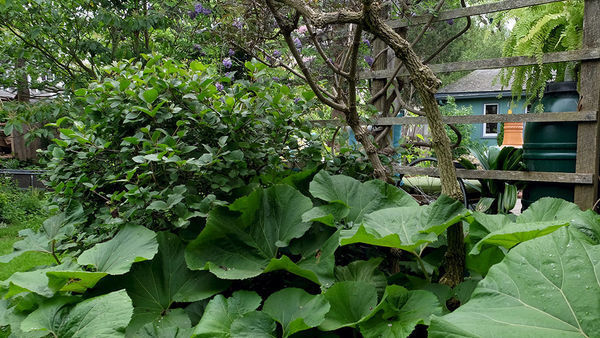













Comments
Log in or create an account to post a comment.
Sign up Log in